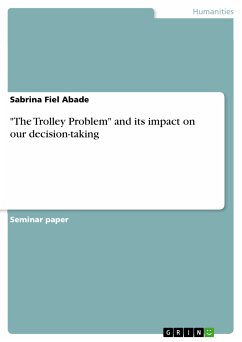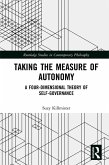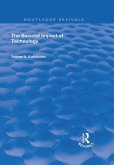Seminar paper from the year 2021 in the subject Philosophy - Miscellaneous, grade: 1,3, , course: Systematic Introduction to Philosophy, language: English, abstract: "The Trolley Problem" and its impact on our decision-taking, has first been established by Philippa Foot in 1967. In the dilemma she created, we are confronted with two options of action-taking. The death of one person only to save multiple other people, or the death of multiple people because one does not feel in the position to choose to kill the single person. In order to create a discussion on this topic, I will elaborate how the dilemma is explained by Foot. Since utilitarianism plays a major role in this dilemma, as most people think this is the right way to act, I will briefly explain its idea and how I feel about it. At this point, I want to precise that I will not be going into the definitions of morality, as they would go beyond the scope of this paper. I will only go into the aspects of intending and foreseeing, which are important terms to distinguish in this discussion. The main interest of this paper lies in applying what we learned about the "Trolley Problem" and the terms that the dilemma implies, in connection with modern technologies. I will do this, by considering some aspects brought by Patrick Lin in "The Ethics of Autonomous Cars". How would a car act in a trolley case? Can it properly distinguish between intending and foreseeing, and at the same time protect its owner?
Dieser Download kann aus rechtlichen Gründen nur mit Rechnungsadresse in A, B, BG, CY, CZ, D, DK, EW, E, FIN, F, GR, HR, H, IRL, I, LT, L, LR, M, NL, PL, P, R, S, SLO, SK ausgeliefert werden.









